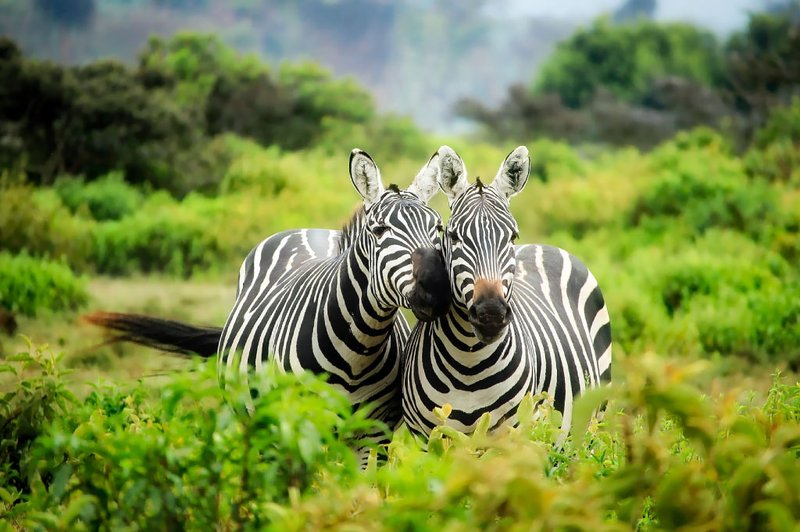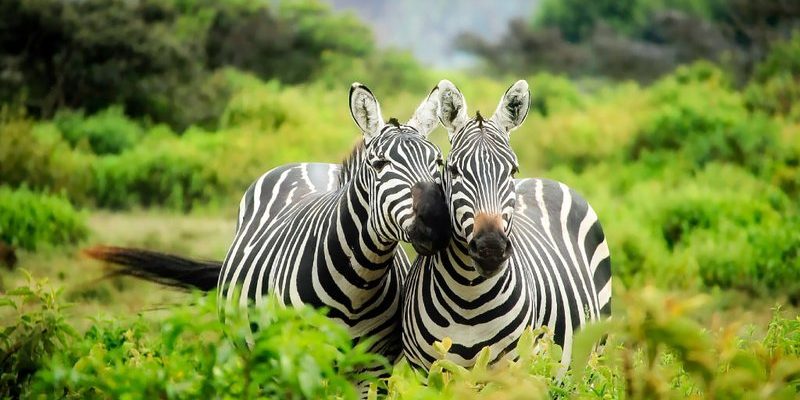
Imagine sitting down with your favorite coffee and diving into the wonderful world of plains zebras. It’s a bit like unraveling a mystery—there’s a lot to discover about their behavior, social structure, and, yes, the myths that surround them. By understanding these misconceptions, we can appreciate these incredible animals even more.
Let’s explore some of the most common myths and facts about plains zebras. Ready? Let’s trot right in!
Zebras Are Black with White Stripes
You might have heard the saying, “Zebras are black with white stripes.” Honestly, it’s one of the most persistent misconceptions out there. So, what’s the truth?
Actually, the skin underneath those stripes is **black**, but the stripes themselves are not purely white. They’re more like light shades of brown or cream. Each zebra has a unique pattern, much like our fingerprints, making each one distinctly individual. You might be wondering, why those stripes anyway?
The stripes help zebras in several ways. For one, they *deter* biting flies that can transmit diseases. Researchers found that flies are less attracted to striped surfaces than to solid colors. Additionally, the stripes create an optical illusion that can confuse predators, especially when zebras move together in a herd.
Zebras Are Loners
Another common myth is that zebras are solitary creatures. Let me explain: plains zebras are actually quite social animals. They thrive in groups—known as herds—usually composed of a few females, their young, and a dominant male.
Being in a herd provides safety in numbers, allowing them to watch out for predators together. Here’s a neat story: when a predator approaches, zebras often align their bodies to create a united front, making it harder for the predator to single out one animal. Isn’t that fascinating?
Zebras also communicate within their social groups. They use a range of vocalizations, body language, and even facial expressions to convey messages. They don’t just hang out; they form bonds that can last for years, just like a close-knit group of friends.
All Zebras Are the Same
You might think all zebras look alike, but that’s not the case. In fact, there are three main species of zebra: the **plains zebra**, the **Grevy’s zebra**, and the **mountain zebra**.
While they share similar characteristics, each species has unique traits. For example, the Grevy’s zebra has larger ears and a more horse-like build compared to the plains zebra, which is smaller and stockier. Their stripes also differ in pattern; Grevy’s have narrower, more closely spaced stripes than the plains zebra.
So, if you’re ever out in the wild and spot a zebra, take a moment to identify which species you’re looking at. You’ll have a whole new appreciation for these magnificent creatures.
Zebras Are Just Like Horses
You might think of zebras as mere “striped horses,” but that’s a misconception that can lead to misunderstandings about their behavior and needs. While zebras and horses are indeed both part of the Equidae family, they have significant differences.
For starters, zebras are not domesticated. They have a strong herd instinct and can be quite wild. Horses, on the other hand, have been bred for thousands of years to interact with humans. This makes zebras less trainable and more unpredictable in a human setting. Imagine trying to train a wild creature that’s all about freedom—it’s a challenge!
Another difference lies in their anatomy and behavior. Zebras have a more robust body and a unique digestive system that allows them to thrive on tough, coarse grasses. They also have distinct social structures, with a strong focus on family groups and dynamics.
Zebras Don’t Need Water
Some people believe zebras can survive without water for long periods. However, that myth is far from the truth! Plains zebras require access to water to stay healthy. Depending on their environment, they need to drink every few days to meet their hydration needs.
In the wild, zebras have developed behavioral adaptations that help them find water, especially during dry seasons. They are known to migrate over long distances in search of fresh grazing grounds and water sources. This migration is a spectacular sight, showcasing their endurance and survival instincts.
Interestingly, during the dry season, zebras will graze on dry grasses, which offers them some moisture. However, it’s not enough. They still need to find a reliable water source to survive.
Zebras Are Aggressive
You might have seen videos or read stories about aggressive zebras, leading to the belief that they’re dangerous creatures. While they can defend themselves when threatened, most zebras are not naturally aggressive.
In fact, zebras are more likely to flee than fight when faced with danger. When there’s a threat, they rely on their speed and agility to escape. They might kick or bite if cornered, but that’s simply a part of their self-defense mechanism.
Think of them as the gentle guardians of the grasslands. They may have an intimidating appearance, but at heart, they’re just trying to keep themselves and their young safe from predators, much like any other animal.
So, there you have it! By unraveling these common myths and misconceptions about plains zebras, we get a clearer picture of these fascinating animals. They are wonderfully complex creatures with behaviors and social structures that reflect how they’ve adapted to their environment.
Understanding the real facts about zebras not only enhances our appreciation for them but also underscores the importance of conservation efforts. When we know the truth, we can help protect these amazing animals and their habitats. Next time you see a zebra, you’ll have more admiration for their stripes and everything they represent. What a beautiful world we share!

